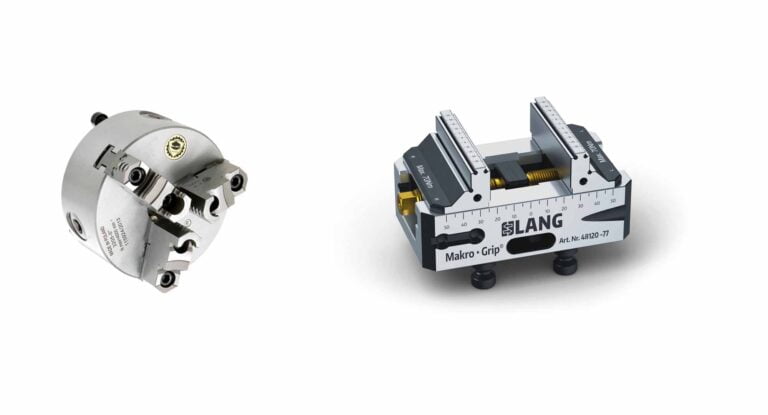
Share
As a machinist, an important part of your job is ensuring that you utilize the right tools that can assist with the efficiency of your production. A work-holding tool is a dependable tool that can be used to carefully place and secure a part or product that is being manufactured. The cutting forces of today’s manufacturing tools are so powerful that they can pull your workpiece out of place; a work-holding tool eliminates that problem. Below we will explore work-holding tools and demonstrate why they’re so important during manufacturing.
When utilizing a work-holding component two considerations have to be taken into account. The first one is how you will properly place and secure the workpiece without damaging it and the second one is how tight your work-holding has to be to make sure your workpiece does not come out of the vice; which could result in an accident or damage. There are a variety of work-holding tools that can be used to provide the necessary security you will need during production.
Types of Work-Holdings:
A three-jaw chuck is a type of work-holding clamp that can be used to not only secure a workpiece during manufacturing but also keep intact working tools such as drills. A three-jaw chuck is an asymmetrically designed tool that has a scroll plate center and is surrounded by three-jaws that are known in manufacturing as teeth. When in motion the scroll plate and the jaws work together to tighten and secure the particular piece being manufactured.
A machine operator utilizing a three-jaw chuck should know that it cannot be used on every workpiece. For instance, clamping a ring with a three-jaw chuck would not be conducive to the production because a three-jaw chuck would squeeze your ring into a triangular shape. There is a high chance the ring would fly out of the work-holding. In this case, it is better to use a disc or solid round parts to clamp in a three-jaw chuck. There are ways of making custom shapes using a three-jaw chuck such as implementing pie-jaws for clamping of rings however we will touch on that in a different article.
Vices are another type of work-holding tool that can be used to secure a workpiece. Today’s vices are typically formed out of metal and act as a safeguard for workpieces that have to be machined. Some vices are made to hold a lot of force and some are made not to. Vices that are less forceful are usually equipped with teeth or dovetails that are designed to dig into the material as a locking mechanism. Dovetails are formed to have two linear sides that come into contact at a 60-degree angle which creates a v-shape clamp that tightens and locks.
Similar to older vices, quick-change work-holdings require machine operators to specify the axis in which the vice should be locked into before machining; this is referred to as indicating your vice. In contrast, newer work-holdings rely on subplate techniques to assist with indicating point 0, this technique is efficient and saves time because unlike the old-fashioned vices; machine operators do not have to repeat the indication. Once the subplate is placed into the machine it sits and remains at point 0, machine operators just have to remove and replace the top portion which is your vice.
Some work-holdings have soft-jaws that are generally made from aluminum or mild steel. Those soft-jaws combined with a vice permit machine operators to machine shaped parts for instance lope or flower-shaped parts.
Alternative work-holdings:
Aside from typical work-holdings such as 3-jaw chucks, vices and collet chucks there are alternative options when it comes to work-holdings. The most cost-effective alternative for a manufacturing company is to create their own fixtures that can act as a work-holding tool. For example, the bottom of quick-change devices usually have 4 studs placed in their predetermined location, a manufacturing company can mimic the location of those studs and create fixtures. Because of their ability to keep workpieces in place, fixtures are best used when operating on a workpiece that has already been machined and cannot afford further clamping into the vice.
Work-holdings are a necessary component of machining. Their effectiveness in securing workpieces is how precision is achieved and rids the scrapping and redoing of material; this in turn saves time and money. All machinists should rely on some type of secure and efficient work-holding to ensure that the workpiece being manufactured can be machined safely and accurately.